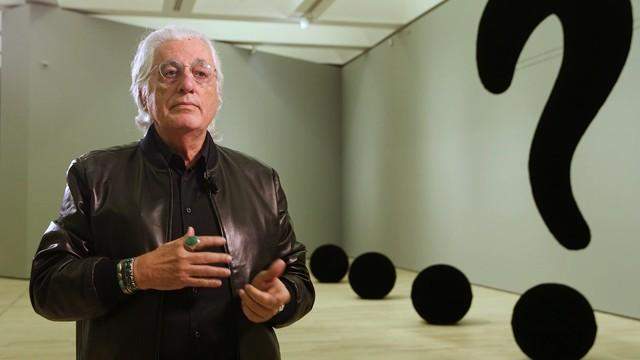Farewell to Germano Celant, the father of Arte Povera passes away at age 80
Famed art critic Germano Celant, known level for being the father of Arte Povera, passed away today in Milan at the age of 80. He was hospitalized at San Raffaele in Milan for complications from Covid-19: the passing was confirmed by sources close to the curator. Born in Genoa in 1940, when he was only twenty-seven years old in 1967 he had curated the Arte povera and IM spazio exhibition at Galleria La Bertesca in Genoa, which kicked off one of the major movements in twentieth-century world art: artists such as Alighiero Boetti, Pino Pascali, Jannis Kounellis, Giulio Paolini, and other major twentieth-century artists had exhibited there.
The definition “arte povera” would later be effectively illustrated in a manifesto dated November 23, 1967 (two months after the Genoese exhibition) and published in Flash Art: “a poor art,” Celant wrote, “engaged with contingency, with the event, with the ahistorical, with the present,” defined by “a being [...] , which prefers informational essentiality, which dialogues neither with the social system nor with the cultural system, which aspires to present itself suddenly, unexpected with respect to conventional expectations, an asystematic living, in a world in which the system is everything,” and by an attitude “aimed at the finding of the factual meaning of the emerging sense of human living.” Celant would later specify, in an interview with Repubblica in 2017, that Arte Povera “is such a broad expression that it means nothing. It does not define a pictorial language, but an attitude. The ability to use everything you have in nature and in the animal world. There is no iconographic definition of Arte Povera.”
Throughout the 1970s, Celant would continue to define Arte Povera theory, organizing exhibitions in Italy and around the world, eventually becoming a collaborator at the Guggenheim in New York, of which he would become senior curator in 1988. Of his activity at the Guggenheim, one recalls in particular the exhibition Italian Metamorphosis 1943-1968 (of 1994), with which Celant continued to define the identity of postwar Italian art, thus continuing research that found its climax with important exhibitions, among which one recalls above all Identité italienne. L’art en Italie depuis 1959 held at the Centre Pompidou in Paris in 1981.
By 1993, Celant had become director of the Fondazione Prada (although in the meantime he had continued to initiate other projects, such as when he animated the first Florence Biennale of Art and Fashion in 1996): his most ambitious project in this sphere was perhaps the huge exhibition Post Zang Tumb Tuuum held in 2018 in Milan, his last major project on 20th-century art: an exhibition on Italian art of the early 20th century, from 1918 to 1943. In 2015, on the other hand, is the much-discussed Art & Food exhibition held at the Milan Triennale on the occasion of Expo 2015, a major review aimed at exploring the relationship between art and food from 1851 to the present. Among his countless experiences, Celant also boasts the artistic direction of the 47th Venice Biennale in 1997. The most recent exhibition he curated was the major monograph on American artist Richard Artschwager, his first Italian anthological exhibition, to be held between October 2019 and February 2020 at the Mart in Rovereto.
Pictured: Germano Celant at the Artschwager exhibition.
 |
| Farewell to Germano Celant, the father of Arte Povera passes away at age 80 |
Warning: the translation into English of the original Italian article was created using automatic tools. We undertake to review all articles, but we do not guarantee the total absence of inaccuracies in the translation due to the program. You can find the original by clicking on the ITA button. If you find any mistake,please contact us.





























